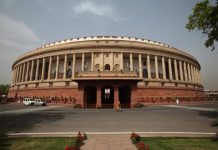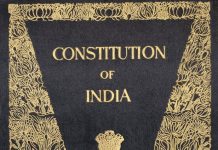This article is written by Udita Prakash, a law student at UPES, Dehradun. This article deals with the importance of the native language, the danger faced by the people using their native language, and the reason why people have abandoned their native language.
Table of Contents
What are native languages
Languages are important in our lives as they play an important role in communication and understanding each other. Most of the time, the term native language refers to the language that we learn in early childhood because it is spoken by our family and/or the language of the area in which the child lives. It is also known as mother tongue or arterial language. With the advent of globalization, it has become imperative for us to explore foreign languages. But it should not urge us to alienate our native language. Language is not only a means of communication but also a powerful tool for preserving our culture and heritage. When a language dies, so does part of the culture.
The effects of globalization are like indigenous peoples (also known as First Nations peoples) losing or are at great risk of losing their native language in Canada. According to a UN report, at least 43% of the more than 6,000 languages spoken around the world are at risk. India alone has about 600 potentially endangered languages.
Importance of native languages
As education is the baseline of learning in schools around the world, students are inherently at a disadvantage because classes are not taught in their native language. Teaching in the native language is important for optimizing student success for many reasons.
The development of the student’s first language promotes the development of the second language. In other words, learning a second language is much easier when the student already has a solid foundation in the first language. Knowledge and skills can also be completely transferred from one language to another.
Teaching in the native language also helps students’ general well-being. Students enjoy school and are happier and more successful when taught in their native language. In contrast, students who are taught in a language other than their mother tongue are more likely to fail in first grade or drop out of school altogether.
Schools usually teach in one of the national languages of the country. For example, Burundi declared that English is one of the national languages, so more schools are being taught in English. This gives urban students more privileges than rural students. Students in urban areas are more likely to already speak or at least be exposed to the language. Rural students are much more isolated and often enroll in school knowing only the language spoken at home.
In Mongolia, the Kazakhs are the largest minority. Until 2005, teachers received only textbooks written in Mongolian, even if they taught in Kazakh.
In Botswana, schools teach only in English and Tswana, national and minority languages.
Students are required to take and pass exams in these languages, as these languages are also a core subject of the national curriculum. This is detrimental to indigenous children enrolling in school without prior knowledge of English or Tswana.
In India, there are more than 600 languages spoken. There are 22 languages included in the Eight Schedule of the Indian Constitution.
There are few places where native languages are being used for the official purpose or the teaching at schools, but most of the places English as the language is used in spite of the native language. To avoid the extinction of the language, the United Nations introduced International Mother Language Day in 1999. It is celebrated on February 21 of each year.
Dangers faced by native languages in the modern world
Languages are endangered for many reasons. Some are because of culture. For example, many cultures are either colonized or dominated by another culture. This often resulted in the removal of the native language from the native culture. If these conditions last long enough, then languages get rejected or only spoken in secret, or disappear altogether. There are many examples in North America where indigenous peoples, now known as First Nations people, have lost or are at great risk of losing practical knowledge of their native language.
In other cases, the language may decline or die on the spot, or in other environments, it may remain weak. We can see an example in the immigrant community from New York to South Africa who needed to change their lifestyle and thus, also the language. Also, many dying languages can be difficult to preserve if their traditions are predominantly verbal and there are few written records.
Another loss in a foreign language has far broader consequences than a simple loss of vocabulary. Even if archived, dead languages may lack colloquialism, accents, grammar, syntax, and context. These linguistic features are often used to reflect the speaker’s thinking as much as the actual choice of words.
Losing a language can also mean losing important knowledge about history, culture, and even the local environment of a language group. For example, the ability to choose different words for plants and the soil in which they grow can be lost to scientists, botanists, and scholars if these particular explanations do not have equivalent words in a more predominant language. It also provides some information.
Why people abandon their native language
People abandon their native language for various reasons. One reason is the children of the family do not learn the language. There are many reasons why people do not learn their parents’ native language such as in the case of immigrant parents often advising their children to speak the language which is spoken by the people around them. They do not want to face the problems for the children and to be treated as the one who does not belong to that place. Children of immigrant parents may also refuse to speak their native language for fear of being teased at school. Sometimes parents just don’t speak the language at all.
One may not be able to control whether their child speaks the family’s native language, but not taking the trouble to learn the language that the family speaks is not only socially harmful, but also culturally irresponsible.
Factors endangering native languages
The factors responsible for endangering the native languages are as follows:
Cultural, political, or economic alienation
It creates a strong incentive for people to abandon their language (for themselves and their children) and favour another, more authoritative language. An example of this is assimilation education. This is often the case when indigenous and ethnic groups that were once previously colonized and/or conquered are likely to gain employment and/or acceptance in the network in order to achieve higher social status. Cultural and linguistic features of other groups with sufficient power imbalances to be culturally integrated through various means of coercion within and outside the group. Examples of this type of danger include Welsh in England, Scottish Gaelic, Scots in Great Britain, Irish and English in Irish, Sardinian in Italy, Ryukyuan and Ainu in Japan, and Chamorro in Guam. This is also the most common cause of language danger.
As the Indian government adopted Hindi as the official language of the Union Government, Hindi has inherited many Indian languages. Other forms of cultural imperialism include religion and technology. Religious groups either believe that the use of a particular language is immoral, or put pressure on believers in a language that is the approved language of that religion (such as Arabic as the Quran’s language). Cultural hegemony may arise not from the history of previous domination or conquest, but from increasing contact with a larger and more influential community through better communication compared to relative isolation centuries ago.

Urbanization
The movement of people to urban areas can force people to learn the language of their new environment. Over time, later generations lose their ability to speak their native language, putting them at risk. When urbanization occurs, new families living there are pressured to speak the common language of the city.
Intermarriage
This can also endanger the language, as there is always pressure to speak each other’s language. This can lead to children speaking only the most common languages spoken between husband and wife.
Preservation of native languages in India
India is a huge country in Asia and occupies a strong position mainly due to its population and geographical region. It is not surprising that so many languages are spoken with such great power. Due to the wide variety of languages spoken, there are no obstacles to the medium of communication between national speakers. Also, most people in India speak Hindi, English, and their native languages.
The communication between the people here is mostly in the English and Hindi language. People do not use their native language in the workplace, the main reason for this is that people think the language which is spoken by them is the inferior one and to look best among the crowd one has to speak the English language in spite of the native language.
Constitutional provisions
Although our constitution has identified Hindi in Devnagri Script as the official language, we have taken many steps to protect other languages. In addition to Hindi, there are 21 official languages recognized by the Constitution as intended languages under Eight Schedule of the Constitution of India.
There are constitutional provisions related to the protection of the language. Among all, the most important ones are as follow:
- Article 29 of the Constitution of India protects the interests of minorities. The article states that “… the section of citizens who have their own language, script or culture reserves the right to preserve it.”
- Article 343 deals with the official languages of the Indian Union. According to this article, Devanagari letters must be Hindi and the numbers must follow the international format of Indian numerals. This article also establishes that English will continue to be used as the official language for the 15 years since the Constitution was enacted.
- Article 346 deals with the official languages of interstate and interstate and federal communications. This article states that an “approved” language will be used. However, we can use Hindi if two or more states agree that the communication is Hindi.
- Article 347 empowers the President to recognize a language as the official language of a particular state only if the President is convinced that a significant proportion of the state wants to recognize the language. Such recognition can be made for parts of the state or for the entire state.
- Article 350B provides for the establishment of special staff for linguistic minorities. Officers are appointed by the President to investigate all issues related to linguistic minority safeguards and report directly to the President. The president can then present the report to each parliamentary meeting room or send the report to the government of the relevant state.
Scheme for Protection and Preservation of Endangered Languages (SPPEL)
Inspired by the dire situation of lesser-known languages in the country, the Ministry of Education (Government of India) enacted the Scheme for the Protection and Preservation of Endangered Languages (SPPEL) in 2013. The plan is to document and archive the languages of countries at risk or at risk in the near future. The plan is overseen by the Central Indian Language Institute(CIIL) in Mosul, Karnataka. CIIL has worked with various universities and research institutes in India for this mission. At this time, languages spoken by less than 10,000 speakers, or languages that have not been linguistically studied before, are considered primarily documented in this Government of India scheme.
Currently, 117 languages are listed as documentation. It is estimated that documents in the form of grammars, dictionaries and ethnic language profiles for about 500 lesser-known languages will be available in the coming years. Every day, the languages of the whole world are in danger due to various factors. In India alone, the dangerous situation of languages spoken by lesser-known tribal communities is alarming. Language disappears after the danger of language. When the language dies out, the worldview and traditional knowledge system embedded in the language of the community also becomes a parish. SPPEL’s mission is to preserve and preserve digital documents and archive these endangered languages in the country.
National Education Policy and use of the mother tongue
The National Education Policy of 2020 emphasizes the use of the native or local language as the medium of teaching up to class 5 and recommends that it continue until class 8 and beyond. The new National Education Policy (NEP) encourages all students to study three languages at school mentioned under Schedule 8 of the Constitution. At least two of the three languages must be native to India. Example: if Mumbai students are learning Marathi and English, they should choose to learn another Indian language. The choice of language to study depends on the state and the student. However, it is imperative that at least two of the three languages are country-specific, one of which is probably the local/regional language. A statement from the Ministry of Education states that “no language is imposed on any student,” but it is unclear to what extent students can choose a particular language.
Conclusion
Therefore, in conclusion, I must say that language can be recognized as culture. Language plays an important role in the development of indigenous culture. This study points to the fact that language can be used as a tool to protect indigenous cultures. The language is considered sacred to many indigenous peoples. In other words, a language cannot be separated from the culture it represents. Cross-cultural communication, effective cooperation, and mutual understanding have been found to help indigenous peoples maintain their culture, language, and identity. Diversity is one of the main concerns about the need to use appropriate strategies aimed at making a difference in this world.
References
- .https://www.thoughtco.com/native-language-l1-term-1691336#:~:text=In%20most%20cases%2C%20the%20term,first%20language%2C%20or%20arterial%20language..
- https://www.idra.org/resource-center/why-is-it-important-to-maintain-the-native-language/
LawSikho has created a telegram group for exchanging legal knowledge, referrals and various opportunities. You can click on this link and join:
https://t.me/joinchat/J_0YrBa4IBSHdpuTfQO_sA
Follow us on Instagram and subscribe to our YouTube channel for more amazing legal content.
 Serato DJ Crack 2025Serato DJ PRO Crack
Serato DJ Crack 2025Serato DJ PRO Crack










 Allow notifications
Allow notifications



